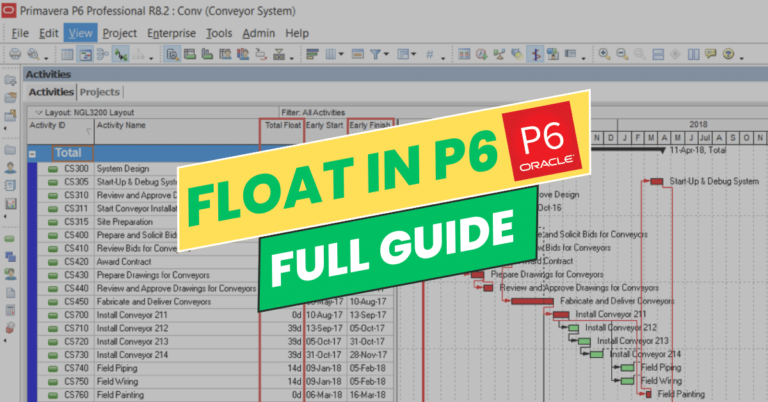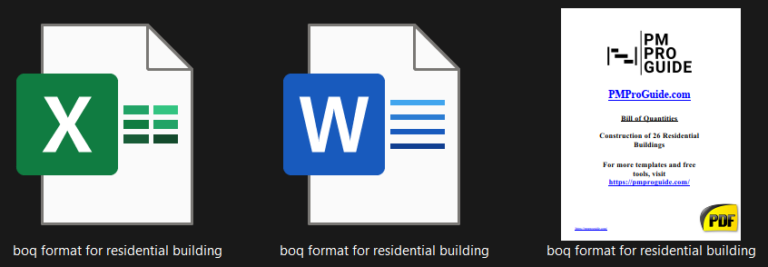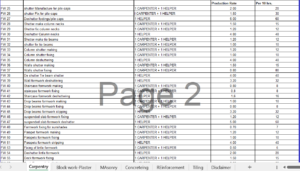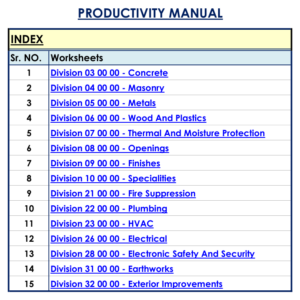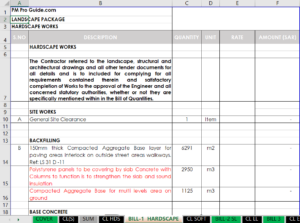If you’re working in the construction industry, you’re probably familiar with the Construction Specifications Institute (CSI) Master Format. This document is used to organize and categorize construction information, making it easier for professionals to communicate and collaborate on projects. One of the key components of the CSI Master Format is the Divisions of Work. In this article, we’ll take a closer look at what these divisions are and how they can be used in your construction projects.
Table of Contents
What are the CSI Master Format Divisions of Work?
The CSI Master Format Divisions of Work is a set of 50 standardized divisions used to organize construction information. Each division corresponds to a specific aspect of a construction project, such as concrete, electrical, or roofing. The divisions are hierarchical, with Division 1 being the most general and Division 50 being the most specific.
Here is a breakdown of the 50 divisions:
Division 1: General Requirements
This division includes general requirements for a construction project, such as submittals, quality control, temporary facilities, and more.
Division 2: Site Work
It covers all site work, including excavation, grading, paving, landscaping, and more.
Division 3: Concrete
This division includes all concrete work, such as foundations, slabs, columns, and more.
Division 4: Masonry
It covers all masonry work, including brickwork, stone, terra cotta, and more.
Division 5: Metals
This division includes all metal work, such as structural steel, ornamental metal, metal decking, and more.
Division 6: Wood, Plastics, and Composites
It covers all wood, plastic, and composite materials used in construction, such as framing, decking, paneling, and more.
Division 7: Thermal and Moisture Protection
This division includes all materials used for thermal and moisture protection, such as insulation, roofing, waterproofing, and more.
Division 8: Doors and Windows
It covers all doors, windows, and related hardware, including automatic doors, revolving doors, and more.
Division 9: Finishes
This division includes all finishes for construction projects, such as flooring, wall coverings, painting, and more.
Division 10: Specialties
It covers all specialties, including visual display boards, toilet accessories, and more.
Division 11: Equipment
This division includes all equipment used in construction, such as elevators, escalators, and more.
Division 12: Furnishings
It covers all furnishings, such as office furniture, window treatments, and more.
Division 13: Special Construction
This division includes all special construction requirements, such as swimming pools, fountains, and more.
Division 14: Conveying Equipment
It covers all conveying equipment, including elevators, escalators, and more.
Division 15: Mechanical
This division includes all mechanical systems and equipment, including HVAC systems, plumbing, fire suppression systems, and more.
Division 16: Electrical
It covers all electrical systems and equipment, including power distribution, lighting, communication systems, security systems, and more.
Division 17: Specialties
This division includes specialty systems and equipment, such as elevators, escalators, and moving walkways, as well as flagpoles, fireplaces, and other decorative features.
Division 18: Communications
It covers communication systems and equipment, including audio-visual equipment, intercoms, paging systems, and more.
Division 19: Integrated Automation
This division covers all integrated automation systems and equipment, including building automation systems, energy management systems, and more.
Division 20: Equipment
It includes all equipment not covered in other divisions, such as laboratory equipment, medical equipment, and more.
Summary of Divisions 21-50
Divisions 21-50 cover a range of additional construction requirements, including fire suppression systems, plumbing, HVAC, electrical systems, and more. These divisions are further broken down into more specific categories, such as fire sprinklers, plumbing fixtures, ductwork, and more. By using a standardized set of divisions, construction professionals can ensure that all aspects of a project are covered and that information is organized in a clear and efficient manner.
All Divison in table form
| Division | Title | Description |
|---|---|---|
| 01 | General Requirements | Includes general project requirements, such as bidding procedures, site preparation, and temporary facilities. |
| 02 | Existing Conditions | Addresses the conditions that exist on the site before construction begins, including demolition, site surveys, and hazardous materials testing. |
| 03 | Concrete | Covers all aspects of concrete construction, including formwork, reinforcement, and placement. |
| 04 | Masonry | Includes all masonry work, such as brickwork, stonework, and tile. |
| 05 | Metals | Addresses metal construction, such as structural steel framing, metal decking, and ornamental metals. |
| 06 | Wood, Plastics, and Composites | Covers wood and plastic products, such as framing, sheathing, and trim. |
| 07 | Thermal and Moisture Protection | Includes all aspects of building envelope systems, such as roofing, waterproofing, and insulation. |
| 08 | Openings | Covers doors, windows, and related components, including hardware and glazing. |
| 09 | Finishes | Addresses all interior and exterior finishes, such as gypsum board, plaster, and paint. |
| 10 | Specialties | Includes specialized building components, such as toilet partitions, lockers, and fire protection equipment. |
| 11 | Equipment | Covers equipment installations, such as elevators, escalators, and conveyors. |
| 12 | Furnishings | Addresses all interior and exterior furnishings, such as seating, tables, and signage. |
| 13 | Special Construction | Includes specialized construction techniques and materials, such as swimming pools, fountains, and pre-engineered structures. |
| 14 | Conveying Equipment | Addresses vertical transportation systems, such as elevators and dumbwaiters. |
| 15 | Mechanical | Covers all aspects of mechanical systems, such as HVAC, plumbing, and fire suppression. |
| 16 | Electrical | Addresses electrical systems, such as power distribution, lighting, and communication. |
| 17 | Communications | Includes communication systems, such as data networks, audiovisual, and security. |
| 18 | Plumbing | Covers all plumbing systems, such as domestic water, sanitary waste, and storm drainage. |
| 19 | HVAC | Addresses all heating, ventilation, and air conditioning systems. |
| 20 | Fire Suppression | Includes all aspects of fire suppression systems, such as sprinklers, standpipes, and fire alarms. |
| 21 | Fire Detection and Alarm | Addresses fire detection and alarm systems, including smoke detectors, heat detectors, and alarms. |
| 22 | Plumbing Specialties | Covers specialized plumbing components, such as pumps, valves, and faucets. |
| 23 | Heating, Ventilating, and Air Conditioning (HVAC) Specialties | Includes specialized HVAC components, such as air filters, humidifiers, and ductwork. |
| 24 | Building Automation | Addresses building automation and control systems, such as energy management and lighting control. |
| 25 | Integrated Automation | Covers integrated automation and control systems, such as security and access control. |
| 26 | Electrical Specialties | Includes specialized electrical components, such as transformers, switchgear, and surge suppression. |
| 27 | Communications Specialties | Covers specialized communication components, such as intercoms, public address systems, and data transmission equipment. |
| 28 | Electronic Safety and Security | Addresses electronic safety and security systems, such as CCTV, access control, and intrusion detection. |
How are the CSI Master Format Divisions of Work used?
The CSI Master Format Divisions of Work are used in a variety of ways throughout the construction industry. Here are some examples:
Project Planning
During the planning phase of a construction project, the CSI Master Format Divisions of Work can be used to organize project information and make sure that all aspects of the project are covered.
Bid Proposals
When contractors submit bid proposals for a construction project, they often use the CSI Master Format Divisions of Work to organize their proposals and make sure that they are addressing all aspects of the project.
Project Management
Throughout the construction process, the CSI Master Format Divisions of Work can be used to organize information and make sure that all parties involved in the project are on the same page.
Benefits of using the CSI Master Format Divisions of Work
Using the CSI Master Format Divisions of Work offers a number of benefits for construction professionals. Here are just a few:
Standardization
By using a standardized set of divisions to organize construction information, the CSI Master Format can help to reduce confusion and miscommunication between project stakeholders.
Clarity
The CSI Master Format Divisions of Work provide a clear and concise way to organize construction information. This can help to ensure that all aspects of a project are covered and that nothing is overlooked.
Collaboration
By using a standardized set of divisions, the CSI Master Format can help to facilitate collaboration between project stakeholders. This can lead to better communication and more efficient project management.
Efficiency
Using the CSI Master Format Divisions of Work can also help to improve project efficiency by providing a clear structure for organizing information. This can help to reduce the time and effort required to manage construction projects.
Conclusion
In conclusion, the CSI Master Format Divisions of Work are an essential tool for construction professionals. By providing a standardized set of divisions to organize construction information, the CSI Master Format can help to improve communication, collaboration, and efficiency throughout the construction process. Whether you’re a contractor, architect, engineer, or owner, understanding the basics of the CSI Master Format Divisions of Work is essential for success in the construction industry.
FAQs
- What is the CSI Master Format?
The CSI Master Format is a document used to organize and categorize construction information. - What are the CSI Master Format Divisions of Work?
The CSI Master Format Divisions of Work is a set of 50 standardized divisions used to organize construction information. - Why are the CSI Master Format Divisions of Work important?
The CSI Master Format Divisions of Work are important because they provide a clear and concise way to organize construction information, which can help to improve communication, collaboration, and efficiency throughout the construction process. - How are the CSI Master Format Divisions of Work used in project planning?
During the planning phase of a construction project, the CSI Master Format Divisions of Work can be used to organize project information and make sure that all aspects of the project are covered. - How can I learn more about the CSI Master Format Divisions of Work?
You can learn more about the CSI Master Format Divisions of Work by visiting the Construction Specifications Institute website or by consulting with a construction professional.




